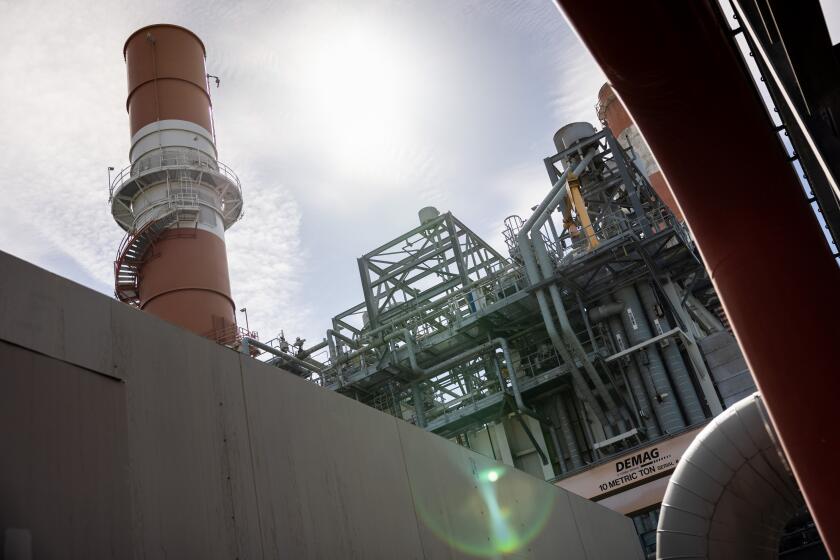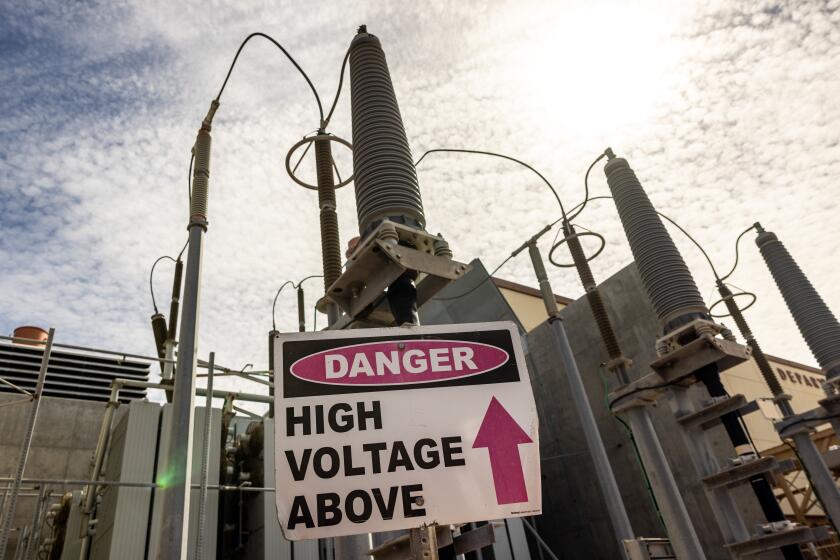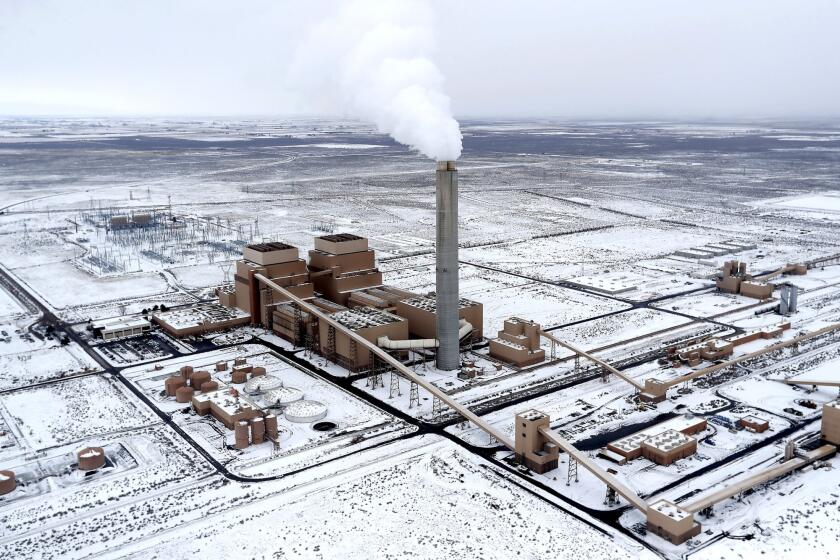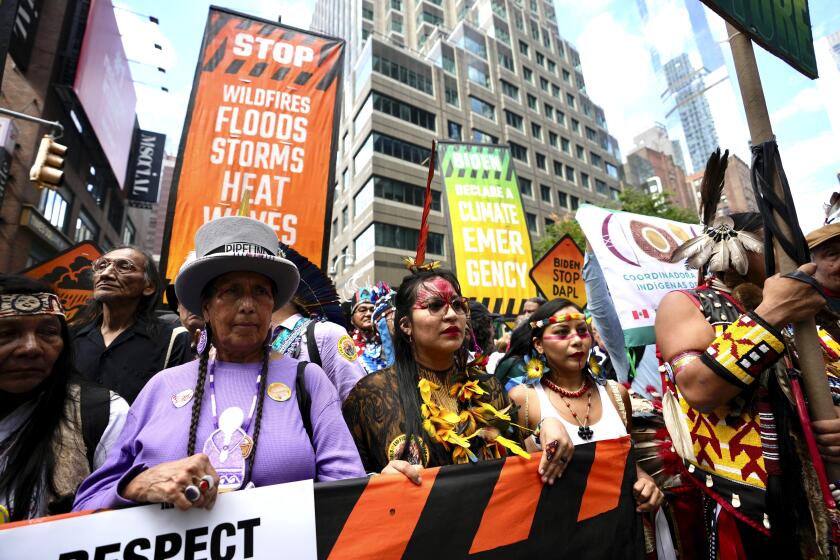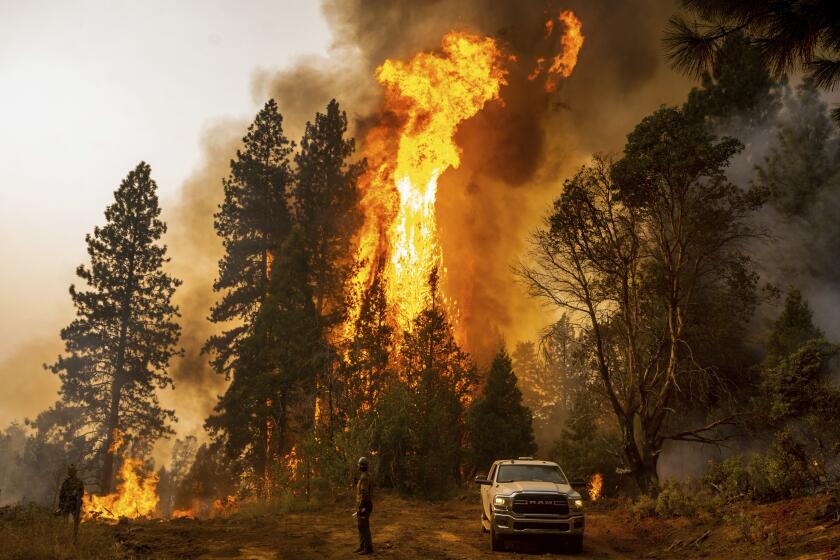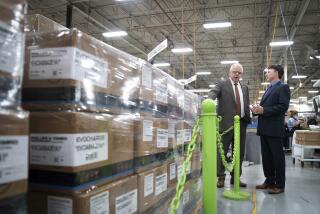Biden awards $7 billion for clean-hydrogen hubs across the country
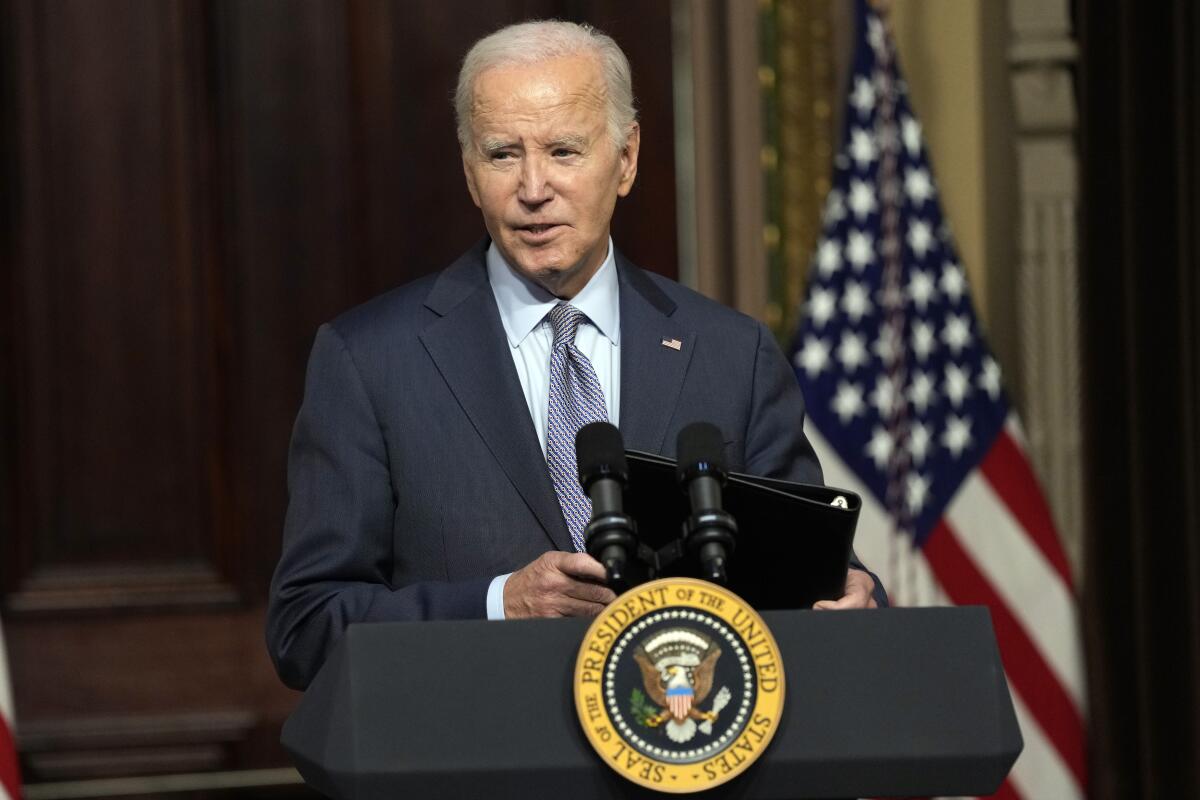
- Share via
WASHINGTON — Large-scale clean energy projects from Pennsylvania to California have been selected by the Biden administration for a $7-billion program to kick-start development and production of hydrogen fuel, a key component of President Biden’s agenda to slow climate change.
His goal is to establish seven regional hydrogen hubs to help replace fossil fuels such as coal and oil with cleaner-burning hydrogen as an energy source for vehicles, manufacturing and generating electricity.
Biden is expected to make the official announcement during an economic-themed visit to Philadelphia on Friday.
The White House calls clean hydrogen “essential to achieving the president’s vision of a strong clean energy economy” and net-zero greenhouse gas emissions in the U.S. by 2050.
“As a clean fuel, hydrogen complements the role played by other clean energy sources, like wind and solar, to help the U.S. reduce emissions in energy-intensive sectors of the economy: steel and cement production, heavy-duty transportation, and shipping,’’ the White House said in a statement.
Los Angeles hopes to become a green hydrogen hub.
The seven hubs, which include projects in 16 states, will spur more than $40 billion in private investment and create tens of thousands of good-paying jobs, the White House said, including many high-paying union jobs.
There were 23 finalists for the hydrogen fuel program. The projects selected are based in California, Washington, Minnesota, Texas, Pennsylvania, West Virginia and Illinois. All but the California and Texas hubs include projects in multiple states. Pennsylvania has projects in two separate hubs.
The infrastructure law Biden signed in 2021 included billions of dollars to develop so-called clean hydrogen, a technology that industry and clean-energy advocates have long pushed as a way to reduce planet-warming greenhouse gas emissions produced by fossil fuels.
Some environmentalists call hydrogen a false solution because it frequently relies on natural gas or other fossil fuels as feedstocks.
Energy companies say fossil fuels can serve as feedstocks if the projects capture the carbon dioxide produced and keep it out of the atmosphere, a technology that has yet to be produced at commercial scale.
Critics said the $800-million green hydrogen plan could end up making the climate crisis worse, not better.
States and businesses have been competing for federal dollars in the new Energy Department program, which will create regional networks of hydrogen producers, consumers and infrastructure. The intent is to accelerate the availability and use of the colorless, odorless gas that already powers some vehicles and trains.
Among those selected were the Appalachian Regional Clean Hydrogen Hub, based in West Virginia, and the Philadelphia-based Mid-Atlantic Clean Hydrogen Hub. Pennsylvania, a battleground state of the highest importance to the Democratic president in next year’s election, is in line to benefit from both projects.
Biden has made Philadelphia a regular stop for both official and campaign events, and partners in the proposed Philadelphia-area hub have labor unions that are key Biden supporters. The West Virginia-based hub includes major Pittsburgh-based natural gas companies that are active in the region’s prolific Marcellus Shale reservoir, including the parent company of the operator of the controversial Mountain Valley Pipeline in West Virginia and Virginia.
Sen. Joe Manchin, a West Virginia Democrat who muscled approval of the $6.6-billion pipeline through Congress in an unusual agreement with the White House this year, hailed the Appalachian hub.
The oil giant plans to invest in underground salt caverns that can store solar and wind energy.
“This means West Virginia will be the new epicenter of hydrogen in the United States of America,” he said of the hub, which will receive up to $925 million in federal spending. “West Virginia will be on the leading edge of building out the new hydrogen market while bringing good-paying jobs and new economic opportunity to the state.”
The Appalachian hub will extend to Ohio and includes a $1.6-billion facility under construction in northern Pennsylvania that is working to produce near-zero emissions hydrogen from natural gas.
“This is a big, big deal for ... Appalachia in particular, because these facilities are all based in areas where coal was king,” said Perry Babb, president of KeyState, an owner and developer of the Pennsylvania site.
Partners in the Appalachian hub say it could produce hydrogen from methane using heat, steam and pressure while capturing the carbon dioxide it would generate.
People in New York City have kicked off a week of demonstrations seeking to end the use of coal, oil and natural gas blamed for climate change.
The Mid-Atlantic hub, which includes New Jersey and Delaware, will receive $750 million and will make hydrogen through electrolysis — splitting water molecules using renewable energy sources such as wind and solar power, as well as nuclear power.
The two largest projects are in California and Texas and will each receive up to $1.2 billion.
The Alliance for Renewable Clean Hydrogen Energy Systems in California will produce hydrogen from renewable energy and biomass. The project is intended to provide a blueprint for decarbonizing public transportation, heavy duty trucking and port operations — key emissions drivers in the state and major sources of air pollution.
The Gulf Coast Hydrogen Hub will be centered in Houston, long the energy capital of the U.S., and plans large-scale hydrogen production from both natural gas and renewables.
The Minnesota-based Heartland hub, which includes projects in North and South Dakota, will receive $925 million as it seeks to decarbonize fertilizer used in agriculture and advance use of clean hydrogen in electric generation and for cold climate space heating. It also plans to offer equity ownership to tribal communities and local farmers.
The Midwest hub in Illinois, Indiana and Michigan will receive up to $1 billion and will use hydrogen in steel and glass production, power generation, heavy-duty transportation and sustainable aviation fuel. The hub plans to use renewable energy, natural gas and nuclear energy.
Carbon emissions from fossil fuels and cement production are making western forests drier and more susceptible to wildfire, researchers say.
The Pacific Northwest hub, based in eastern Washington, will extend to Oregon and Montana and will use hydropower and other renewable resources to produce clean hydrogen.
Sen. Patty Murray (D-Wash.) called the $1-billion hub “great news for the Pacific Northwest,” adding that it will create thousands of jobs and “make sure that Washington plays a leading role in growing the green hydrogen economy.’’
Nearly every state had joined at least one proposed hub, and many have been working together, hoping to reap the economic development and thousands of jobs they would bring. Big fossil fuel companies, renewable energy developers and researchers in university and government labs are involved, too.
Environmental groups are skeptical, arguing that while hydrogen is a clean-burning source of power, it takes a great deal of energy to produce. When it’s made with electricity from coal or natural gas, it has a bigger carbon footprint than simply burning the source fuel.
“Hydrogen is another bait-and-switch from an administration that continues to break its promises to aggressively tackle climate change and help communities achieve a just, equitable transition to renewable energy,” said Silas Grant, a campaigner with the environmental group Center for Biological Diversity.
Levy reported from Harrisburg, Pa.
More to Read
Sign up for Essential California
The most important California stories and recommendations in your inbox every morning.
You may occasionally receive promotional content from the Los Angeles Times.
